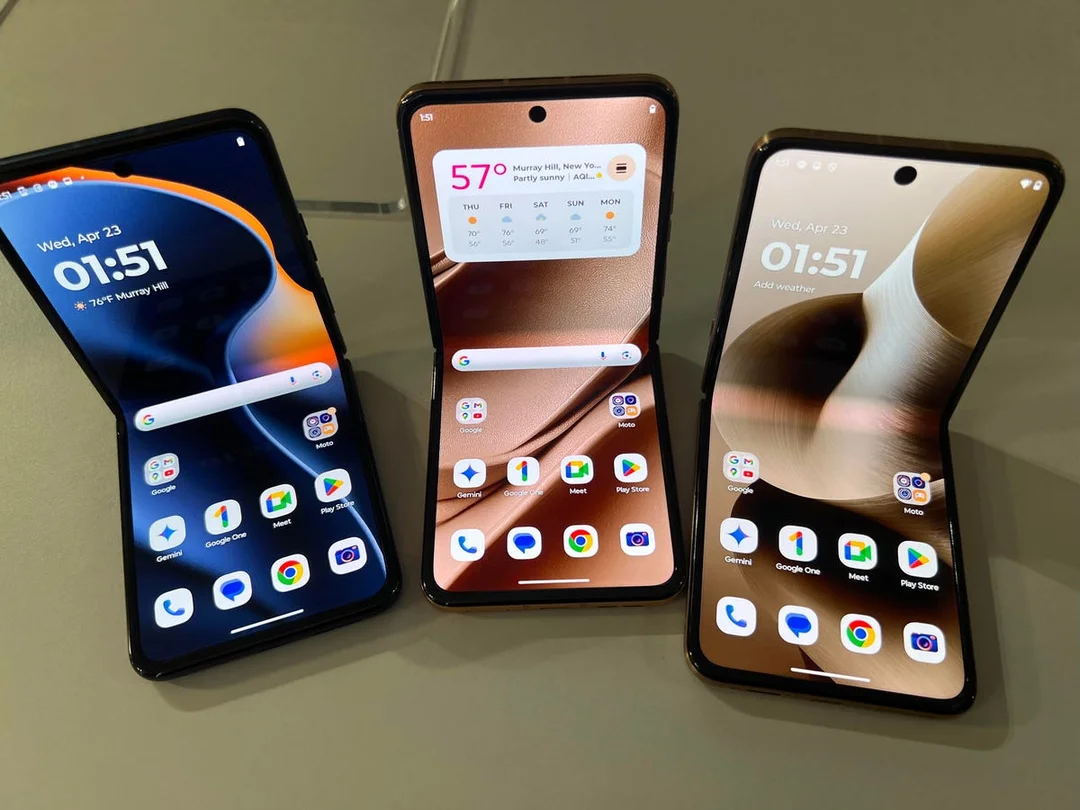
Motorola Razr (2025) Lineup Shakes Up Foldable Market: Can Apple and Samsung Keep Up?
Motorola is making waves in the foldable phone market with its newly announced three-tier Razr (2025) lineup. This ambitious move could pressure industry giants like Apple and Samsung to make foldables more accessible to a wider audience. Instead of targeting only tech enthusiasts or luxury buyers, Motorola is aiming to offer foldable options for various budgets, potentially reshaping the future of this innovative category.
On April 24, 2025, the company unveiled the Razr Ultra (2025), Razr Plus (2025), and the standard Razr (2025), each designed with a different price point and feature set in mind. This strategy marks a significant shift in how foldable phones are marketed and sold.

Priced at $1,300, the Razr Ultra (2025) is positioned as the most powerful flip phone on the market. It's powered by Qualcomm's Snapdragon 8 Elite chip, promising exceptional performance and advanced AI capabilities. Our review shows it even outperformed the Galaxy Z Flip 6 in benchmark tests. The Razr Plus (2025), at $1,000, retains premium features while using the slightly less powerful Snapdragon 8s Gen 3. The standard Razr (2025), priced at $700, is designed to be the most affordable in the family, utilizing a MediaTek Dimensity 7400X processor to balance cost and efficiency.
This pricing strategy is particularly noteworthy because the standard Razr (2025) is cheaper than non-foldable flagship phones from brands like Google, Apple, Samsung, and OnePlus. This could make foldables a more attractive option for consumers who are not willing to pay a premium price.
The hardware differences extend beyond the processors. The Razr Ultra (2025) features a triple 50MP camera setup – the world's first on a flip phone – and a 7-inch pOLED screen. The Razr Plus (2025) and standard Razr (2025) offer variations in screen size and camera configurations. Motorola is clearly segmenting hardware and features to appeal to a wider range of users, from power users seeking top-tier performance to those looking for an entry-level foldable experience.
Software also plays a crucial role in Motorola's strategy. The Moto AI, embedded across the entire lineup, offers tools like Catch Me Up (summarizing missed notifications) and Next Move (suggesting contextual actions). These features aim to provide practical benefits to all users, regardless of which model they choose.
The launch of the Razr (2025) series isn't just about introducing new phones; it's about signaling the maturity of foldable technology. With options available for nearly every budget, Motorola aims to move foldables from a niche market to the mainstream.
Interestingly, rumors suggest Samsung might be considering an FE (Fan Edition) version of its upcoming Galaxy Z Flip phone. As for Apple, while a foldable device is yet to materialize, the pressure to compete is mounting.
The clear benefit for consumers is increased choice. Whether it’s the cutting-edge specs of the Razr Ultra (2025) or the affordability of the standard Razr (2025), there’s likely a device in this lineup for a wide range of users. Motorola's strategy is a bold one that other brands might soon be adopting if they wish to remain competitive. This shift in perspective could make foldable phones a much more commonplace device.
What do you think? Will Apple and Samsung respond with more affordable foldable options? Share your thoughts in the comments below!